New Mexico is the fifth largest state in the United States, so it’s unsurprising that it has a considerable range of climate zones within its borders. Hardiness zones in the state range from the frosty Zone 4b in the northern part of the state to the toasty Zone 9a in the south.
With such a diversity of climates, New Mexican gardeners can be a bit bewildered when it comes to choosing and planting tulips. So let’s clear things up! There’s no reason that residents of the Land of Enchantment can’t enjoy a splendid spring display of tulips in their gardens, regardless of where they reside in the state.

Yellow and white Fosteriana tulips.
©Sergey V Kalyakin/Shutterstock.com
Get to Know the Tulip
The Tulipa genus includes around 150 species with over 3,000 cultivars. They are divided into 15 different classifications based on shape, height, and when they bloom.
| Tulip Facts | |
|---|---|
| Botanical Name | Tulipa spp. |
| Common Name | Tulip |
| Plant Type | Perennial, bulb |
| Sunlight | Full |
| Soil | Rich, well-draining |
| Bloom Season | Spring |
| Toxicity | Toxic to both humans and pets |
Types
There are a lot of tulip types, to say the least. Couple that with the wide climatological range of New Mexico, and choosing the right tulips can certainly be confusing for gardeners. Let’s talk about four different types of tulips that can thrive in the different growing zones within New Mexico.
1. Fosteriana Tulips
For residents in the cold zones of northern New Mexico, you can’t do much better than Fosteriana tulips. Not only are they gorgeous, but they’re very cold-hardy.
Also known as Emperor tulips, Fosterianas feature some of the largest blooms in the tulip world. They grow around 20 inches tall and come in a spectacular array of colors, including white, cream, light and dark pink, orange, and red.
But these tough tulips aren’t just for northern New Mexicans. They thrive in Zones 4-8, covering much of the state.

Two bright orange Fosteriana tulips.
©Kazakov Maksim/Shutterstock.com
2. Kaufmanniana Tulips
Kaufmanniana tulips, also known as water lily tulips, feature short stems with large, showy blooms. And if color is what you’re looking for, look no further! Kaufmanniana tulips come in variations of rose, yellow, pink, purple, orange, and red.
And they are not only gorgeous, but water lily tulips are adaptable. Northern New Mexicans in Zone 4 can grow them, as can Albuquerque residents in their warmer Zone 7.

Red/pink Kaufmanniana tulip with a golden center.
©Alrandir/Shutterstock.com
3. Fringed Tulips
Once considered more of a novelty, fringed tulips are rapidly making their way into the mainstream. It’s easy to see why.
These unique tulips have petals edged with lovely fine fringes, resembling frost on a windowpane. If you want your garden to stand out in your neighborhood, a crop of fringed tulips will certainly do the trick!
They can also handle warmer weather than other tulip varieties. Fringed tulips can flourish in the coldest regions of New Mexico, but they will also thrive all the way down to the much warmer Zone 8 in the mid-southern part of the state. With such beauty and hardiness, it’s no wonder that these beauties are no longer considered novelty flowers!
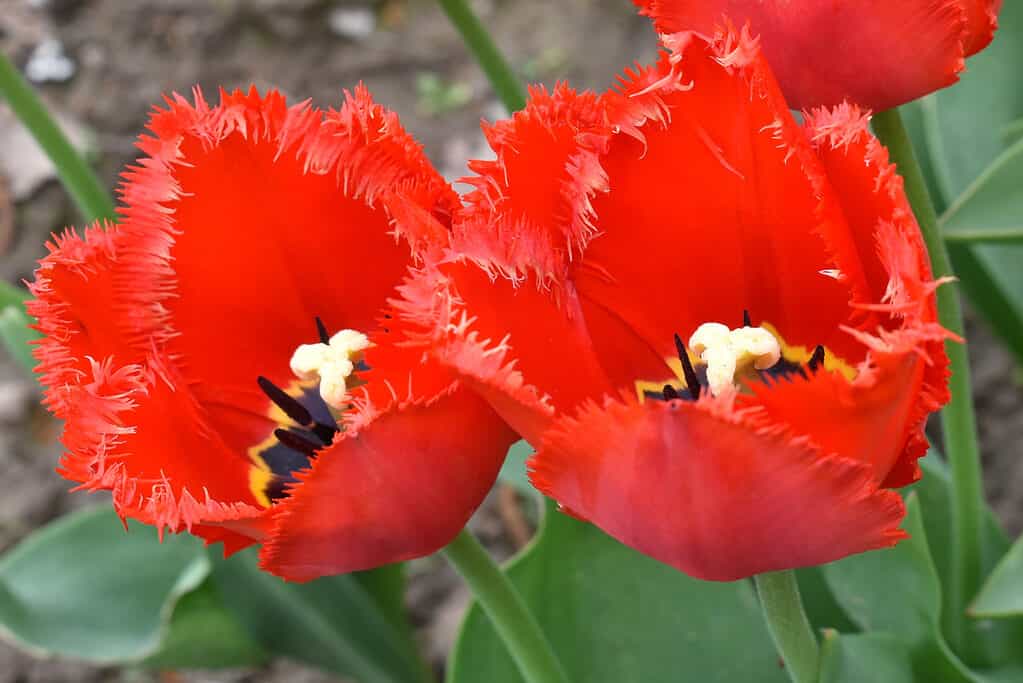
Bright red fringed tulip
©Ritvars/Shutterstock.com
4. Single Late Tulips
For those who live in the warmest New Mexico climates, it can be a bit trickier to grow quality tulips, but it can definitely be done. Single late tulips are among the most warm-weather-tolerant tulips on the market.
These long-stemmed tulips come in a wide variety of colors, ranging from white to pink to yellow to almost black.
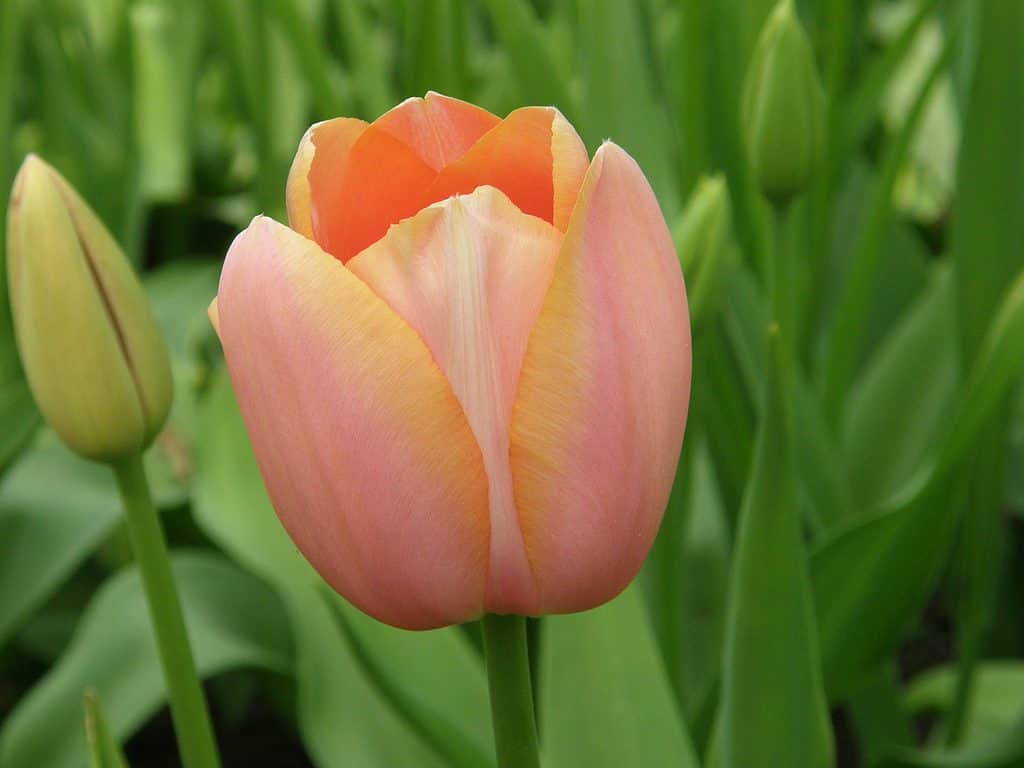
Apricot-pink single late tulip in bloom
©Sergey V Kalyakin/Shutterstock.com
One particular variety, the French single late tulip, fares particularly well in warmer zones because the bulbs mature earlier, so gardeners in the warmest zones of New Mexico might want to go with it.
In the very warmest zones of New Mexico, growers may possibly want to consider chilling their bulbs in a refrigerator until the soil temperature drops to the needed range. This allows the bulbs to get a headstart coming out of dormancy before planting. This won’t be necessary for most other zones in the state, though.

French single late tulips come in a rainbow of colors, such as orange and pink.
©ISmiths/Shutterstock.com
Planting Tips
Now that you have some tulip varieties in mind let’s talk about some best practices to get the most out of your tulip garden next spring.
Bulb Selection
It all starts with bulb selection. When looking at tulip bulbs, it’s best to adopt a what-you-see-is-what-you-get approach. If the bulb is in poor condition in your hands, it won’t get better after you put it in the ground. Planting poor bulbs will yield poor results.
Healthy bulbs are beige-white with a papery outer jacket. You want bulbs that are dry and firm, not soft or squishy. The best bulbs will have no spots, streaks, or cracks. If a bulb is moldy or has a withered look, toss it.
And choose the largest bulbs that appear to be healthy. The bulb holds all the nutrients for the flower. A large bulb has a larger store of nutrients, which will yield a better, more vibrant production in the spring.
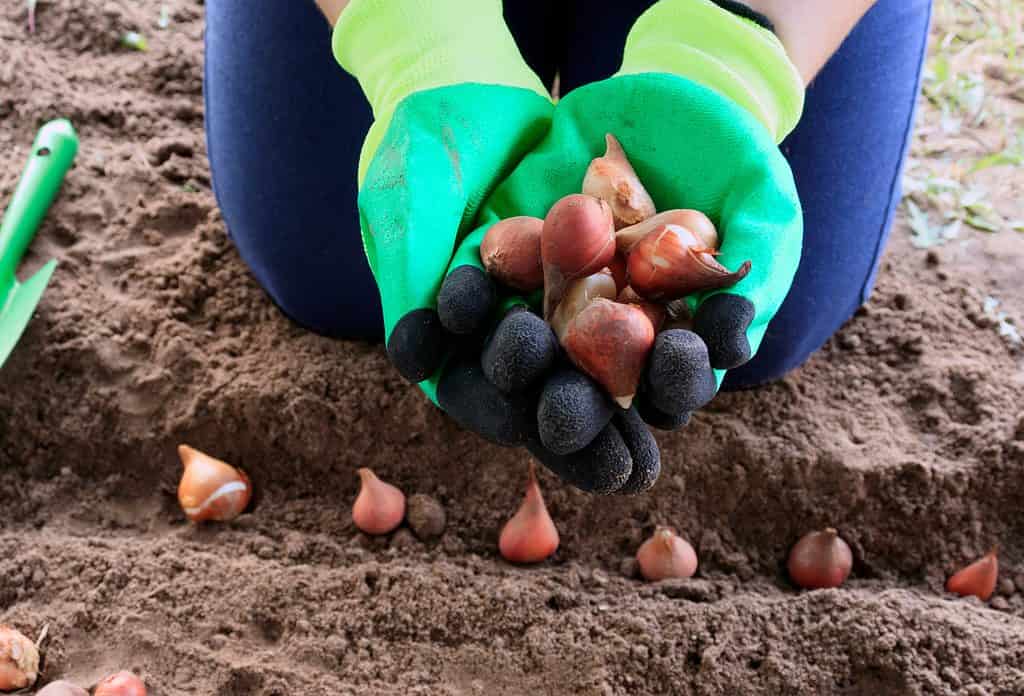
Tulip bulbs in a gardener’s gloved hands.
©Natallia Ustsinava/Shutterstock.com
When to Plant
The best time to plant tulip bulbs depends largely on the hardiness zone where you reside.
Tulip bulbs need a period of cold weather to end their dormancy. If they don’t go through this cold stratification period, the blooms will be malformed or non-existent. Or the tulip may just not grow at all.
A soil temperature below 55°F is ideal for planting tulip bulbs. This allows the bulbs to root before the ground freezes.
It’s best to check the soil temperature in your local area before planting, but here are some general bulb planting timelines for the different zones in New Mexico.
- Zones 4-5 – September
- Zones 6-7 – October
- Zones 8-9 – November/December
Where to Plant
Choose a spot that receives sunlight for at least six hours a day. This shouldn’t be too difficult, considering that New Mexico receives the second most sunny days per year of any state in the United States, trailing only behind Arizona.
It’s also important that it drains well. If there is too much moisture over an extended period of time, it can lead to fatal bulb rot.
Fertilizer can also help your tulips reach their peak potential. A slow-release fertilizer with a nutrient ratio of 9-9-6 is ideal.
If you’d rather use an organic mix, you can use equal parts greensand, bone meal, and blood meal.
Plant the bulbs with the pointed side up about 8-10 inches deep, spaced 3-4 inches apart.
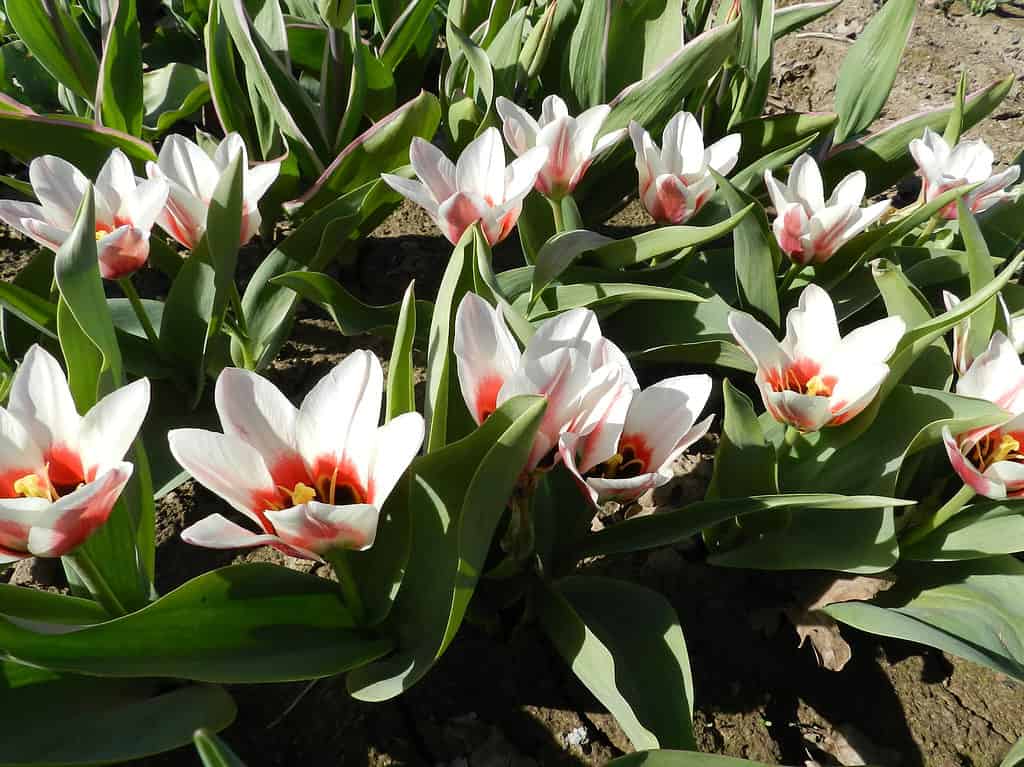
Red and creamy white Fosteriana tulips in the sun.
©Ritvars/Shutterstock.com
Should You Grow Tulips as Perennials?
Tulips are indeed perennials, but they are among the more difficult flowers to perennialize well. The biggest, strongest blooms almost always occur in the first spring, with diminishing returns in subsequent years.
The reasons are varied, but placement is often an issue. If tulip bulbs share a space with summer annuals which require constant watering, the bulbs are likely to rot.
If you want to grow tulips as perennials, it’s best to give them their own space. But even then, temper your expectations. Tulips are persnickety perennials. Some gardeners decide it’s just not worth the effort.
And if you live in the zones of southern New Mexico, the best advice for perennial tulips is simple: don’t even try. Tulips won’t perennialize well, if at all, in those warmer climates. Instead, treat your tulips as annuals. Dig up the bulbs at the end of the growing season and plant new bulbs in the fall.
Toxicity
Tulip bulbs contain alkaloid and glycoside compounds that are mildly toxic to humans and moderately toxic to pets.
Gardening gloves are highly recommended when handling bulbs or blooms to prevent “tulip fingers,” a skin rash well-known to tulip growers.
Common Pests
As with most flowers, there are some pests that can damage your tulips.
Aphids
Aphids are a common pest throughout the state. And, boy, oh boy, do these pesky insects love tulips!
Aphids can often be found on the underside of the leaves. Left untreated, these pests can destroy your tulip garden.
One telltale sign that you have an aphid infestation is to look for ants. Ants and aphids have a symbiotic relationship. The ants eat the excretion of the aphids (often known as honeydew), and in return, the ants protect the aphids. So if you notice a lot of ants around your tulips, you may very well have an aphid infestation on your hands.
The good news is that there are ways to eradicate these unwanted insects. For example, insecticidal soap is highly effective at ridding your tulip garden of aphids, and it’s an environmentally safe choice.
If the infestation is still small enough, you can dip a cotton swap in rubbing alcohol and apply it directly to the insects.
A chemical pesticide is also an option, but it’s best to try the other methods first. It’s better for the environment and safer for you.
Spider Mites
These arachnids are notorious for damaging tulips. They suck the juices from the plant, leaving yellow or white specks on their leaves.
Although spider mites aren’t technically insects, insecticidal soap is effective at controlling infestations.
Wildlife problems
New Mexico’s wildlife is spectacular but can be problematic for tulip growers.
Squirrels love to dig up tulip bulbs in the fall. As recommended above, planting at a deeper depth can deter these critters.
Gophers and voles are also known to feast on tulip bulbs. There are several options to protect your bulbs from these rodents.
You can use chicken wire cages to protect your bulbs. The holes will allow bulbs to take root but will keep these varmints away.
You could also add a layer of gravel or grit above and below your bulbs. Digging through sharp materials is unpleasant for these animals, and they’ll generally avoid it.
Rabbits munch on the tender shoots when tulips first break through the soil’s surface.
Mule deer can also destroy your tulip garden. When tulips begin to grow, mule deer will pull them out of the ground, bulb and all.
You may consider using a commercially available repellent to prevent your tulips from becoming a rabbit and mule deer buffet. Be sure to read and follow the directions on the product’s label.

A gopher standing on its hind legs.
©Pavluntic/Shutterstock.com
Final Thoughts
New Mexican gardens from the north to the south, and the east to the west, can feature beautiful tulip blooms every fall. Wherever you reside in the state, there is a tulip that will thrive for you. Give it a go!
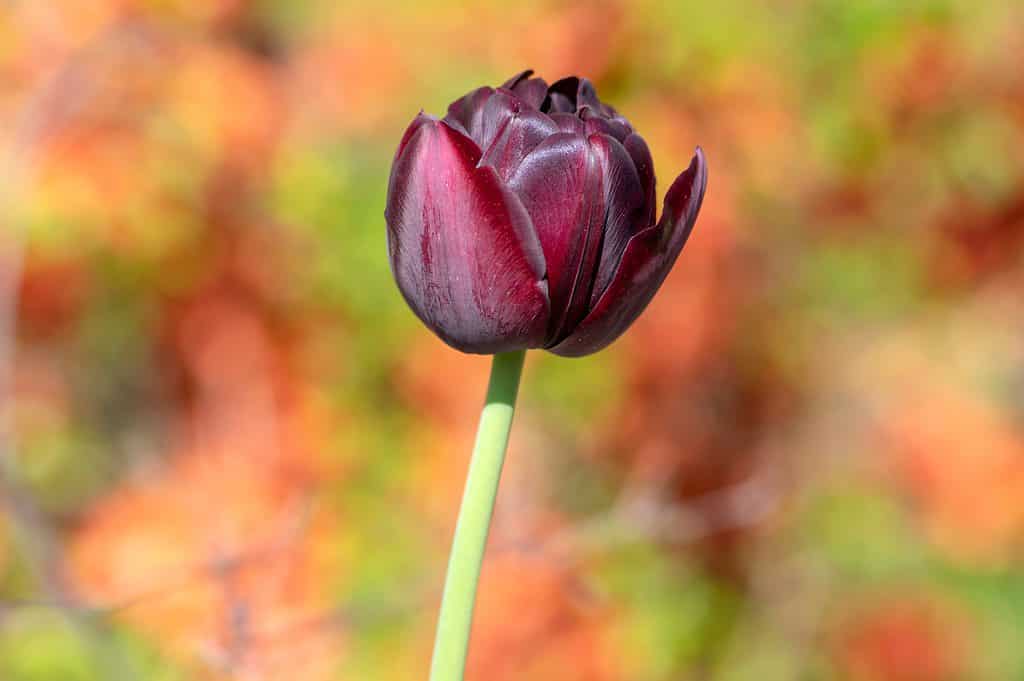
Single late Black Diamond tulip in bloom.
©Iva Vagnerova/Shutterstock.com
The photo featured at the top of this post is © iStock.com/Lynne Nicholson
Thank you for reading! Have some feedback for us? Contact the AZ Animals editorial team.






